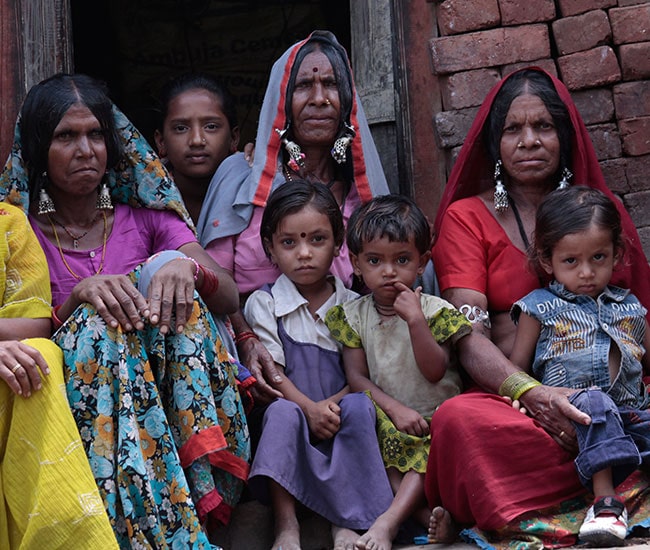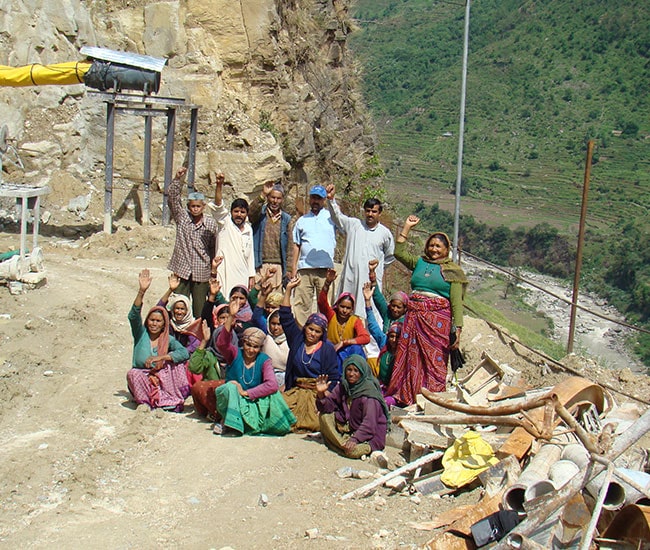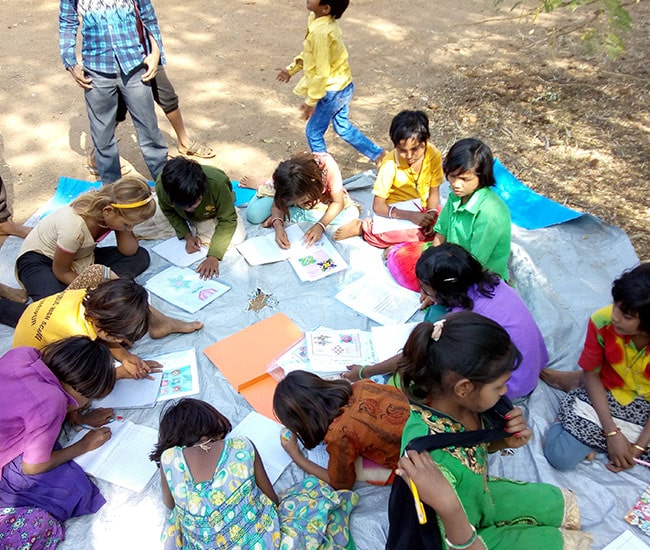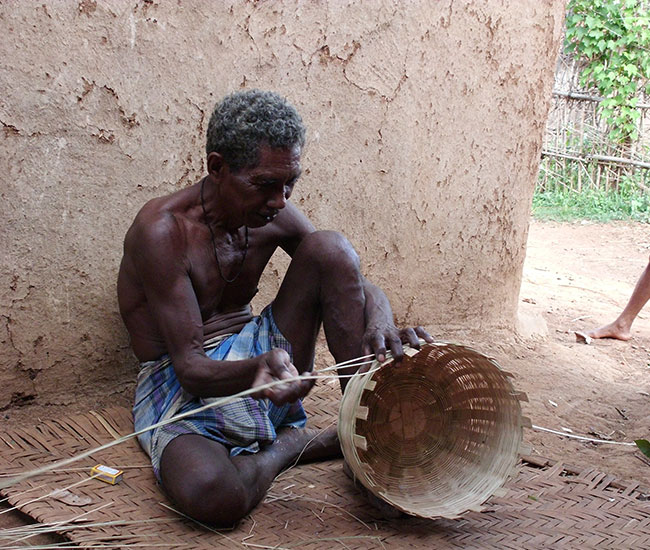
Visthapit Mukti Vahini
Background
The East and West Singhbhum districts of Jharkhand have a sizeable tribal population with Santhal, Ho, Bhumij Munda and Sadan being the main tribes. With the influx of outsiders i.e. non Jharkhandis, various social tensions and economic disparities have arisen. Jharkhand is rich in mineral resources and accounts for nearly 35% of total mineral deposits of the country. Coal India Limited (CIL), one of the largest coal companies of the world carries out much of its mining in Jharkhand. The state also has rich deposits of gold, copper, iron, manganese, bauxite, mica, uranium, etc. Considering the mining prospects in the state, the state government signed more than 50 MoUs in 2005 with business tycoons like Jindal, Mittal, Tata, Essar, Bhushan, etc. There is an investment proposal of Rs.2.5 lakh crores in the state leading to the displacement of families from 50 thousand acres of land. This rapid industrialisation is threatening the very survival of thousands of tribal and other marginalised communities. Over the past three decades the Suvernarekha and other dams in the region have led to the displacement of hundreds of villages without adequate compensation.
Visthapit Mukti Vahini (VMV) works in East Singhbhum and 2 Blocks (Chandil and Kharsawan) of Saraikela Kharsawan district of Jharkhand on issues of displacement, resettlement, livelihood and forest conservation (VMV’s forest conservation efforts), and has led the struggle against the land mafia and against rampant industrialization in the region. When they were part of the Chatra Yuva Sangharsh Vahini, Arvind and some of his comrades would often visit the Chandil dam site where the construction had begun in 1982-83. Realizing that the existing groups and forums were not seriously taking up the concerns of the displaced people, they started the Visthapit Mukti Vahini at a meeting in July 1987 with about 25 people.
They held a camp every Saturday at the submergence area which was far from the town where people could voice their grievances. Slowly, the Saturday camp site became their mobilisation centre. Their initial work was with families of 250 villages displaced due to the construction of the Chandil dam on the Suvarnarekha River by the erstwhile Bihar government. The displaced families belonged primarily to the Santhal community, but VMV also works with other marginalised and Dalit communities of the area.
VMV went on to revive the issues of those displaced by earlier projects such as the Palna dam and Dimna dam, and mobilized people to demand a just rehabilitation package. There are now plans to integrate all the rehabilitation policies in Jharkhand, even if the people displaced are due to other reasons, like industrial development. VMV is demanding that there should be provisions within this integrated policy for people who have been displaced in the past and who receive inadequate or no compensation.
In 2006, when many MoUs were signed there was this sense of fear that no land would be left vacant or arable. The sangathan began to agitate against this in Chandil, as there was news that Jindal would set up its steel plant there. The people were very angry. VMV mobilized them and had a huge rally against industrialization in which 5,000 people participated. Within a month, Jindal changed the site of its proposed plant. So a message went out to the entire state of Jharkhand that companies not considering alternative livelihoods for those displaced could be chased away, and this led to more struggles.
In recent years, several small scale units of sponge iron have cropped up in the sangathan’s work area. These units are adding to air and soil pollution affecting the lac (shellac) crop of the villagers. The sangathan collected information about these units and the status of their environmental clearance. Two sponge iron plants have been shut down due to protest from villages in their vicinity, and two more are facing the heat.
The sangathan has a core group of 7-8 young men and women who are volunteers from different villages. The strength of the sangathan is derived from the tremendous support it has from the people, in terms of both efforts and monetary contributions. Almost 50 percent of the sangathan’s expenditure is being met by local contributions. A senior member of the core group donated 3-4 acres of land to the sangathan for its office as well as the construction of a school that imparts alternative education to Santhal children. (Sobren Smriti Shikshapeeth – Education Centre)
The sangathan believes that people should have the opportunity to make mistakes and learn from them, rather than be told what to do. Their effort is always to have in depth discussions before any decision is taken so that people begin to think deeper on a subject and thus empower themselves. The mark of empowerment is when one can take decisions on one’s own and is able to implement them.
The sustained efforts of VMV over the past two decades have led people to become more aware about the issue of displacement. They have made a landmark contribution in the struggle for displaced people. However, their larger aim is to create an equal society based on a strong value system. With this in mind, they try to connect with other such movements within and outside the state. In 2004, as a step towards creating a forum, they prepared a paper ‘Challenges before polarisation of democratic forces’ and widely circulated the draft. Many sangathans came forward to be part of this forum and it came to be known as the National Coordination Democratic Front (NCDF). Today 30 sangathans are part of it. They conducted a cycle yatra from Kolkata to Delhi on the issue of Right to Work; they also organised a convention in Sambalpur on Right to Natural Resources. Then they had a seminar in Delhi on ‘Right to Reject, Right to Recall’.
In the future, the sangathan aims for their work to be holistic and touch on every aspect of people’s lives rather than be limited to one or two issues. They are working towards such a goal and developing a mindset, strategy and approach towards it.
Stories
VMV’s Forest Conservation Efforts
Forests in Jharkhand extend over 23,605 sq kms representing 29.61 percent of the total geographical area of the state. East and West Singhbhum districts have a forest cover of 31 percent of total land area. The rich forest cover is depleting due to regular threat from the timber mafia.
People have formed Forest Protection Committees (FPC) in various villages where the sangathan works to protect the forests near their villages. The FPCs are operational in 14 villages since 1990 and are protecting forests and regulating its use by the villagers. 80 sq kms of forest is protected by the sangathan and that is providing sources of livelihood to 22 villages. Thanks to the efforts of VMV, the village committees from 22 villages in 5 blocks are associated with the Joint Forest Protection Committee known as Sanyukta Van Raksha Vahini.
Chandil Dam
The rehabilitation package in the late 1980s only comprised compensation based on the lost house and land, and additionally 25 decimal land for householders, or Rs 4,500 and Rs 750 as shifting charges. However, as a result of the struggle for resettlement by the NBA , a policy was declared by the Gujarat government along with World Bank and the activists in December 1987 for the people affected by the Sardar Sarovar Dam (SSD), which had a very significant provision, that stated that land will be given in exchange for lost agricultural land. While at the same time, it was stated that those without any land (Bhoomiheen) will also be given 5 acres of land of their own choice, which would be arable and irrigated.
Meanwhile the situation of the people displaced by the Chandil dam was pathetic. They did not have access to basic amenities—no schools, roads, hospitals, ration cards, drinking water, etc. Half the displaced people had not been issued BPL cards. The compensation which was paid to some of the displaced families was completely inadequate in rebuilding their lives; they did not even get 20 percent of what they lost. Encouraged by the success of the NBA, the recently formed VMV, along with the World Bank and some sensitive ministers and bureaucrats pressurized the Bihar state government to make a separate rehabilitation policy for the families displaced by the Chandil dam.
In December 1990, the provisions of the rehabilitation policy for SSD were accepted in Chandil in principle. The policy mentioned that any male above the age of 18 should be considered as a separate family. Further, arable land would be given in exchange of lost land, a house in exchange of a drowned house, and a security of employment. A cash package of about Rs 50,000 was declared instead of the earlier amount of Rs 5,250. Also several people benefited on the basis of adult children above the age of 18 being considered a separate family. The original survey had mentioned 6,800 families, but now the number was close to 14,000 as beneficiaries of that policy. 2,200 individuals got jobs in different government departments. The sangathan also successfully stopped the displacement of 32 forest villages.
VMV has been demanding from the beginning that the package should be revised according to the price index, just the way it is revised for any government employee. The package was revised in 2003 to Rs 1.77 lakh, and this is the amount every displaced person gets in cash, if he does not get a house or arable land. They are now struggling to get the price index issue approved on paper so that the government compulsorily raises the package amount every year.
Palna Dam
The Palna dam project was earlier a part of the minor irrigation works, but was later incorporated into the Subarnarekha dam project due to their close proximity. Therefore, VMV took up the fight to implement the rehabilitation policy for those displaced by the Palna dam. The argument was that being a part of the Subarnarekha project, every policy passed for the larger project should be implemented for this smaller project within it.
They were just 26 families and they were not organised as a strong group. Their interests would clash and they fought among themselves for leadership. But later they united for the cause of their rehabilitation. When the people realized that they could also be beneficiaries of the rehabilitation package meant for the people displaced by Chandil Dam, then they formed Visthapit Mukti Vahini-Palna unit. They then begun to conduct meetings, the initial meeting having about 60-70 people. They organised a dharna in 2010 wherein they submitted a memorandum to the Superintendent Engineer of the Chandil Dam Project. They then demanded that all the people displaced due to the Palna dam should be given the complete rehabilitation package; they should be given development plans; the Palna dam work should be completed with the canals; and the cooperative should be given the responsibility to manage the fisheries and tourism on the dam. These demands were similar to the ones VMV had made for people displaced by the Chandil Dam, and some of them have been met.
Dimna Dam
The Dimna dam was commissioned for Tata just before India gained her Independence in 1947. People were displaced from 12 villages and they moved up the hill and settled there. Then came a road project which displaced them further. A few years later, the government was back to tell them to move because the canal work of the dam had to be completed. Thrice displaced, these people received just one installment of the compensation. In all, 1,482 acres were lost as part of the Dimna Dam project. The people may have struggled earlier, but had failed in their efforts. They realized that the earlier claims made by the MPs and MLAs were empty claims. In 2008, VMV stepped in to resurrect this issue that had been dead for decades. They managed to dig out old documents from the administration, which proved that the people had indeed been displaced. Over the last few years, their efforts have been primarily to build the confidence of the people, and give them the moral boost to fight once again for all that they have lost.
Sobren Smriti Shikshapeeth – Education Centre
Chandil and Kharsawan blocks have an illiteracy rate of 67% and the displacement due to the construction of the dam has further worsened the situation. Considering the needs of the children, an alternative educational centre named Sobren Samriti Shikshapeeth was started and is being run by the sangathan. 50-60 santhal children are being educated uptil primary level. Donations in cash and kind from the sympathizers of the sangathan are used for maintenance of the education centre. VMV also has a training cum residential centre called Mitan Jumid constructed for the most part with local contributions. This is used for perspective building training of youth from various villages.




